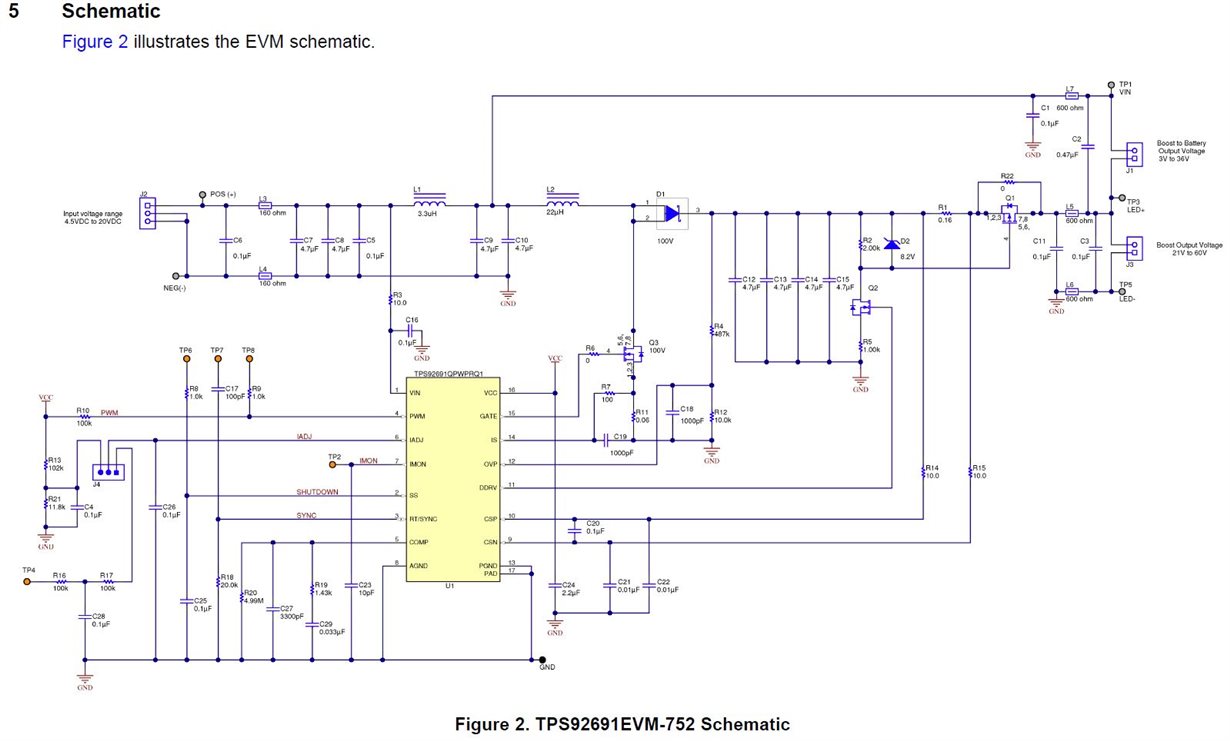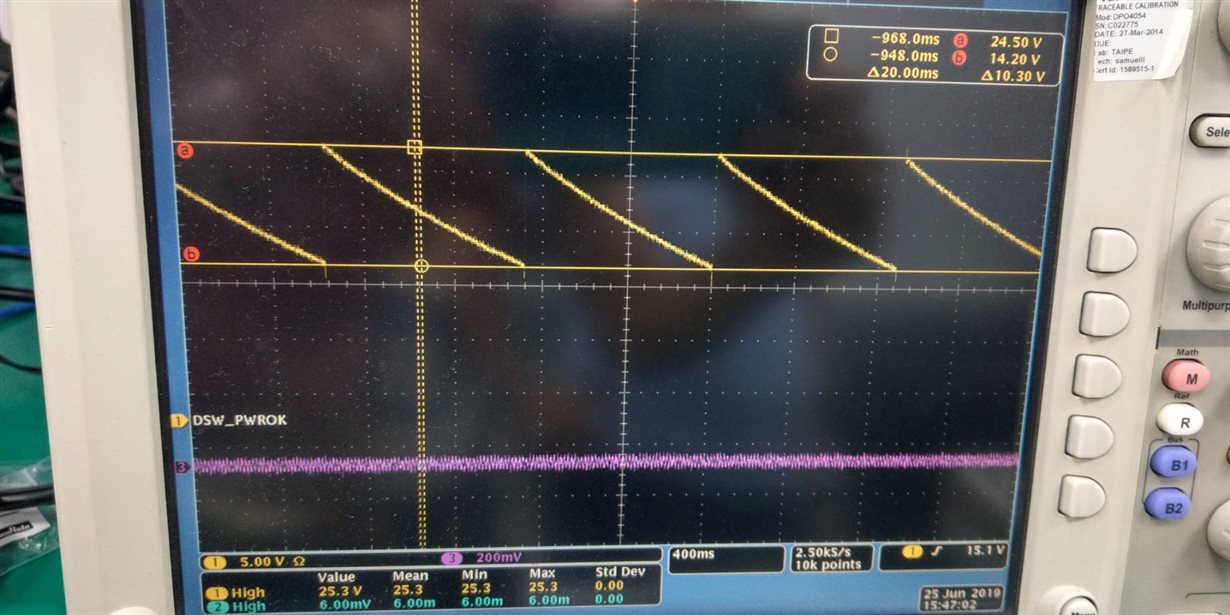Dear Sir,
Our customer have design TPS92691 and they currently try using our EVM to modify to their application to earlier testing. and currently they got some question.
1. They have tried to modify the EVM into their design and it seems having some issue with LED light. Could you kinldy help us check if there is any part that we should be noticed? we have modify about the the part and relation connection to the their design expected PQ5 . please kinldy help us with it .thanks in advance
2. PWM max duty cycle
We notice that for the PWM max duty cycle is only 93%(94.7% max.). But can we be able to use TPS92691 for 24V to 24V 2.5A LED driver under buck-boost application? Please kindly let us know
Above, if there is any question,please feel free to let me know
Cheers
Alec




